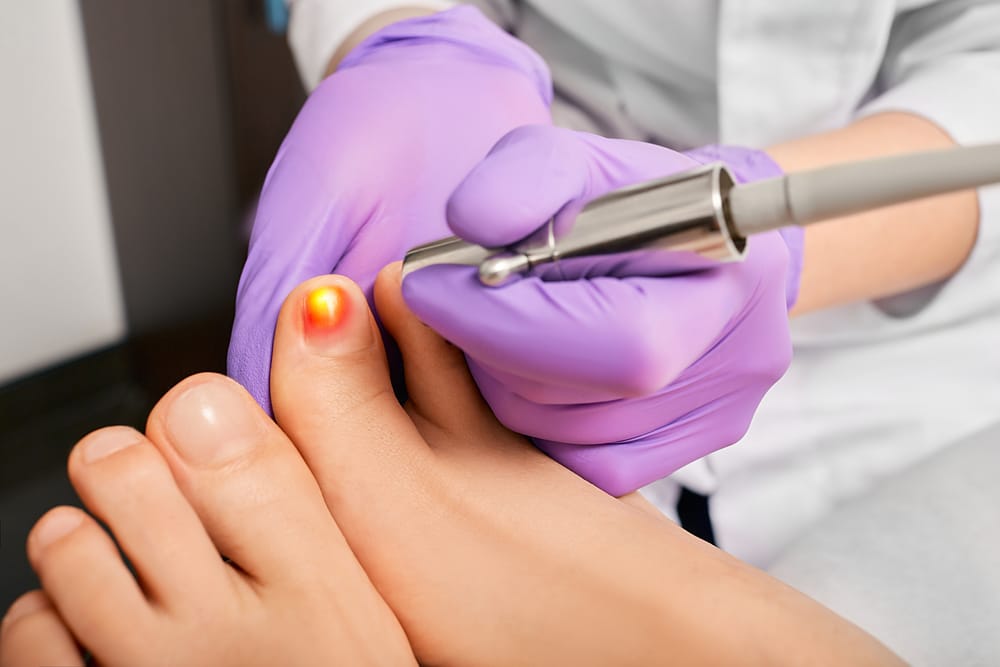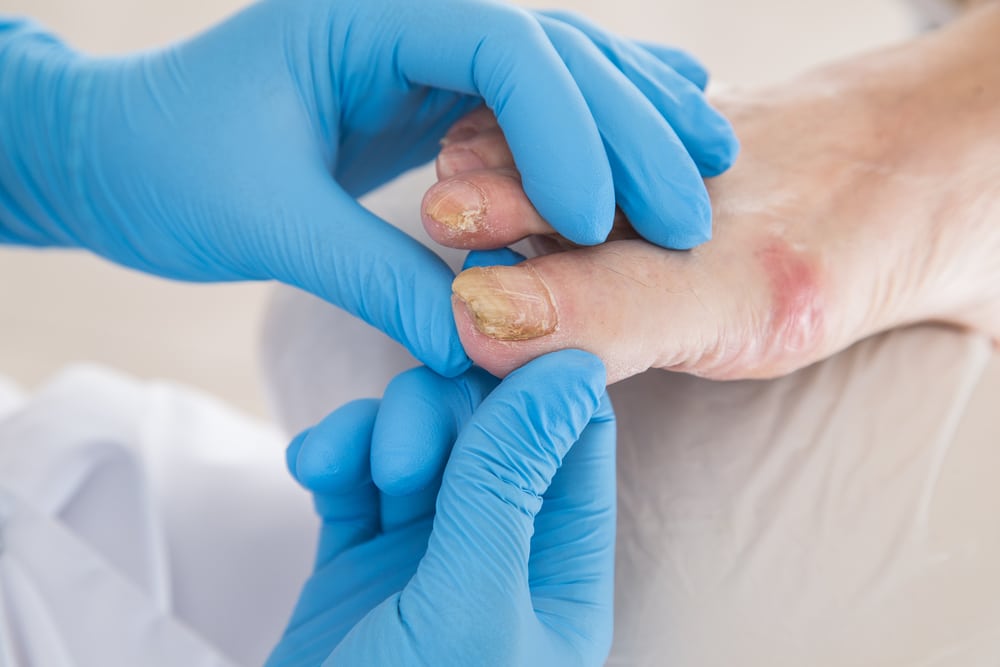An ingrown toenail may start as a minor irritation, but the soreness, swelling, and pressure can quickly become hard to ignore. Many people are tempted to handle the problem themselves, only to discover that the pain intensifies or infection sets in. These ingrown toenail risks are why professional treatment matters. At Michael L. Wach DPM, we’ve seen how quickly a simple toenail problem can escalate—and why safe, expert care is always the better choice.
What Is an Ingrown Toenail?
An ingrown toenail occurs when the edge of the nail curves and grows into the surrounding skin. It most often affects the big toe, though any toe can be involved. The result is tenderness, swelling, and sometimes infection as the skin reacts to the pressure.
Common Ingrown Toenail Risks
Several factors can lead to this condition, including:
- Improper nail trimming (rounding the edges instead of cutting straight across)
- Tight shoes or socks that press the nail into the skin
- Injury to the toe, such as stubbing it or repeated pressure from sports
- Natural nail shape or genetics, which make some nails more prone to curving inward
These causes help explain why ingrown toenails are common—and why they often return if only the surface problem is addressed.
Signs It’s Time to Seek Care
Occasional tenderness from tight shoes or a stubbed toe usually goes away. But when the nail edge grows into the skin, it’s essential to recognize the warning signs that call for medical care:
- Persistent pain and tenderness around the nail
- Redness and swelling that doesn’t improve
- Drainage or signs of infection near the nail fold
- Difficulty walking or wearing shoes comfortably
Patients with diabetes or circulation issues should be especially cautious. For them, an ingrown toenail can progress faster and lead to more serious complications.
What Happens if You Ignore an Ingrown Toenail
Hoping the problem will resolve itself often makes matters worse. As the nail edge continues to dig into the skin, irritation becomes inflammation, which can develop into an abscess. Once an infection takes hold, the toe becomes more painful, swollen, and difficult to treat.
In advanced cases, ignoring an ingrown toenail may even lead to permanent changes in the shape of the nail or surrounding tissue. Delaying care only increases the ingrown toenail’s risks of infection, abscess, and long-term damage.
What We Do Differently—and Why It Works
At Michael L. Wach DPM, our approach to ingrown toenail treatment is built on four pillars: comfort, precision, safety, and lasting relief.
- Gentle Numbing: We begin by numbing the toe so removal is painless.
- Sterile Techniques: All instruments are sterilized to minimize infection risk.
- Targeted Nail Removal: Dr. Wach trims or removes the offending part of the nail while preserving healthy tissue.
- Enhanced Healing: We offer professional wound care guidance—dressings, pain control, and activity modifications—to support efficient recovery.
This approach treats the discomfort at hand and significantly reduces the likelihood of recurrence or post-procedure infection.
Solutions for Recurring Ingrown Nails
Some patients repeatedly experience ingrown toenails in the same spot. For these cases, we often recommend a procedure called a partial matrixectomy. During this treatment, the root of the problem edge is carefully removed so that a portion of the nail does not grow back. The nail remains natural in appearance, but the cycle of pain and inflammation ends for good.
This solution is effective and long-lasting for patients who are tired of ingrown toenails. It allows them to walk, exercise, and wear shoes again without worrying about recurrence.
How to Help Prevent Ingrown Toenails
While not every case can be avoided, simple habits can significantly reduce ingrown toenail risks:
- Trim nails straight across instead of rounding the edges, since curved cuts encourage the nail to grow into the skin.
- Choose shoes with a roomy toe box so the nails aren’t pushed against the skin.
- Keep feet clean and dry to minimize infection if irritation develops.
- Soak feet in warm water with Epsom salts when soreness starts. This can soften the skin and ingrown nail, easing pressure and reducing irritation.
- Check your feet regularly, especially if you have diabetes or circulation issues, since complications can quickly progress.
Despite consistent prevention, some people still develop ingrown toenails due to genetics or natural nail shape. In those situations, professional care ensures that a minor issue doesn’t become a painful problem.
Why Professional Care Matters
Trying to cut or dig out an ingrown toenail at home raises the risk of infection and worsened inflammation. Ignoring the problem isn’t safe, since the pain and damage rarely resolve without intervention. By choosing professional care, you gain immediate relief and long-term protection for your foot health.
At Michael L. Wach DPM, we provide expert ingrown toenail treatment at our Orem and West Valley City locations. With more than 29 years of podiatric experience, Dr. Wach offers safe, effective solutions tailored to each patient.
If you’re struggling with toenail pain, call or text us today at (385) 236-6166 to schedule your appointment. Relief is closer than you think.


